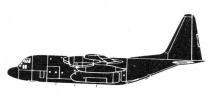Incident Overview

Description
Linjeflyg flight 618, a Vickers Viscount, crashed following a loss of control while on approach to Stockholm-Bromma Airport, Sweden, killing all 22 occupants. Flight LF618 originated at Kristianstad (KID) with stops at Vxj (VXO) and Jnkping (JKG) en route to Stockholm (BMA) in Sweden. On the final leg of the flight, while on approach to Stockholm-Bromma Airport, the aircraft suddenly pitched down from an altitude of 1150 feet. It went into a vertical dive and crashed on a parking lot in the Klvesta neighbourhood. Because the no. 2 and no. 3 engines had been running with reduced power for a long time, the anti-ice system temperature was too low. Probable cause (translated from Swedish): The accidnt was caused by the stabilizer stalling due to the air flow around it being disturbed by ice accretion. The reason why ice was formed is that the de-icing system’s temperature had been too low due to insufficient power on engines 2 and 3 for a long time. This can be attributed to deficiencies in the pilot’s flight manual regarding the operation of the de-icing system, which, in turn, should be due to deficiencies in the flight manual of the manufacturer’s aviation authority. Insufficient information in the pilot’s flight manual on the effects of ice formation on the stabilizer may also have affected. The pilots have also not been informed of the occurrence of severe ice formation in the Stockholm area.
Primary Cause
Insufficient de-icing system power due to insufficient engine power, leading to stabilizer stalling and ice accretion.Insufficient de-icing system power due to insufficient engine power, leading to stabilizer stalling and ice accretion.Share on:





